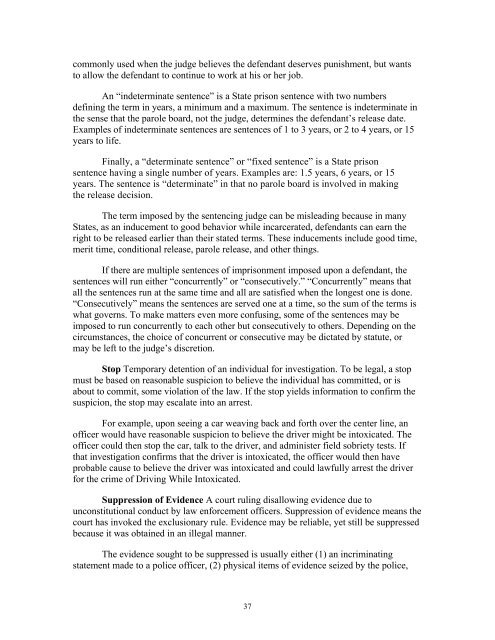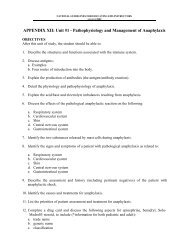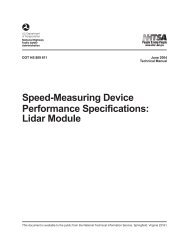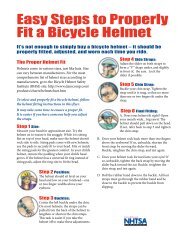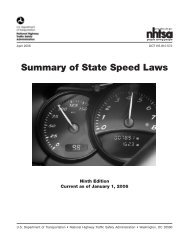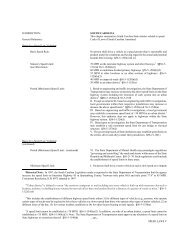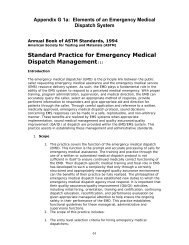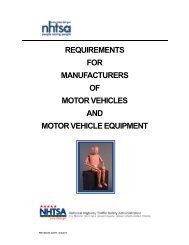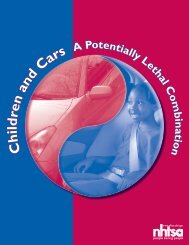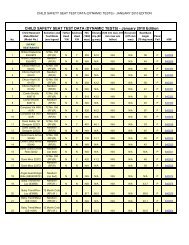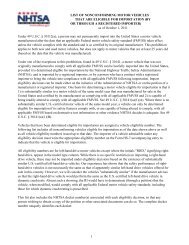The Criminal Justice System: A Guide for Law Enforcement ... - NHTSA
The Criminal Justice System: A Guide for Law Enforcement ... - NHTSA
The Criminal Justice System: A Guide for Law Enforcement ... - NHTSA
You also want an ePaper? Increase the reach of your titles
YUMPU automatically turns print PDFs into web optimized ePapers that Google loves.
commonly used when the judge believes the defendant deserves punishment, but wants<br />
to allow the defendant to continue to work at his or her job.<br />
An “indeterminate sentence” is a State prison sentence with two numbers<br />
defining the term in years, a minimum and a maximum. <strong>The</strong> sentence is indeterminate in<br />
the sense that the parole board, not the judge, determines the defendant’s release date.<br />
Examples of indeterminate sentences are sentences of 1 to 3 years, or 2 to 4 years, or 15<br />
years to life.<br />
Finally, a “determinate sentence” or “fixed sentence” is a State prison<br />
sentence having a single number of years. Examples are: 1.5 years, 6 years, or 15<br />
years. <strong>The</strong> sentence is “determinate” in that no parole board is involved in making<br />
the release decision.<br />
<strong>The</strong> term imposed by the sentencing judge can be misleading because in many<br />
States, as an inducement to good behavior while incarcerated, defendants can earn the<br />
right to be released earlier than their stated terms. <strong>The</strong>se inducements include good time,<br />
merit time, conditional release, parole release, and other things.<br />
If there are multiple sentences of imprisonment imposed upon a defendant, the<br />
sentences will run either “concurrently” or “consecutively.” “Concurrently” means that<br />
all the sentences run at the same time and all are satisfied when the longest one is done.<br />
“Consecutively” means the sentences are served one at a time, so the sum of the terms is<br />
what governs. To make matters even more confusing, some of the sentences may be<br />
imposed to run concurrently to each other but consecutively to others. Depending on the<br />
circumstances, the choice of concurrent or consecutive may be dictated by statute, or<br />
may be left to the judge’s discretion.<br />
Stop Temporary detention of an individual <strong>for</strong> investigation. To be legal, a stop<br />
must be based on reasonable suspicion to believe the individual has committed, or is<br />
about to commit, some violation of the law. If the stop yields in<strong>for</strong>mation to confirm the<br />
suspicion, the stop may escalate into an arrest.<br />
For example, upon seeing a car weaving back and <strong>for</strong>th over the center line, an<br />
officer would have reasonable suspicion to believe the driver might be intoxicated. <strong>The</strong><br />
officer could then stop the car, talk to the driver, and administer field sobriety tests. If<br />
that investigation confirms that the driver is intoxicated, the officer would then have<br />
probable cause to believe the driver was intoxicated and could lawfully arrest the driver<br />
<strong>for</strong> the crime of Driving While Intoxicated.<br />
Suppression of Evidence A court ruling disallowing evidence due to<br />
unconstitutional conduct by law en<strong>for</strong>cement officers. Suppression of evidence means the<br />
court has invoked the exclusionary rule. Evidence may be reliable, yet still be suppressed<br />
because it was obtained in an illegal manner.<br />
<strong>The</strong> evidence sought to be suppressed is usually either (1) an incriminating<br />
statement made to a police officer, (2) physical items of evidence seized by the police,<br />
37


